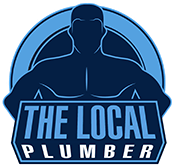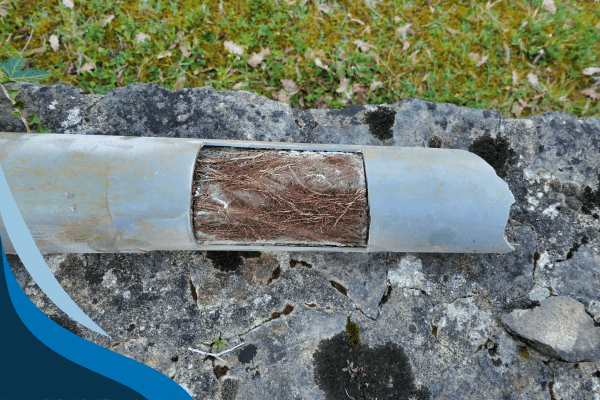When it comes to plumbing issues, one of the most dreaded problems homeowners face is damaged or broken pipes. Whether it’s due to aging infrastructure, invasive tree roots, or general wear and tear, traditional pipe replacement can be costly, invasive, and disruptive. However, there’s a modern and relatively easy solution that many Melbourne residents are turning to which is pipe relining.
In this comprehensive guide, our emergency plumbers dive into everything you need to know about pipe relining, how it works, its benefits, and why it might be the perfect solution for your plumbing needs in Melbourne.
What is Pipe Relining?
Pipe relining is an innovative, non-invasive method used to repair damaged or broken pipes. Instead of digging up and replacing the entire pipe system, pipe relining involves creating a new, durable pipe within the existing one. The process uses a resin that hardens to form a tough, long-lasting liner inside the damaged pipe, essentially “relining” it from the inside.
This method is increasingly popular because it offers a less disruptive, more efficient solution compared to traditional pipe replacement, making it ideal for Melbourne’s urban environments where excavation might cause significant inconvenience.
How Does Pipe Relining Work?
The pipe relining process involves several steps:
- Inspection and Assessment: The first step is to conduct a thorough inspection of the damaged pipe using a CCTV camera. This allows the plumber to assess the extent of the damage and determine whether pipe relining is a viable solution.
- Cleaning the Pipe: Before relining, the pipe must be cleaned to remove any debris, blockages, or tree roots. This is typically done using high-pressure water jetting or mechanical cutting tools to ensure the pipe is smooth and ready for the relining process.
- Inserting the Liner: Once the pipe is cleaned, a specially designed liner, saturated with epoxy resin, is inserted into the pipe. This liner is positioned precisely over the damaged area.
- Curing the Liner: The liner is then inflated, pressing it against the inner walls of the damaged pipe. Depending on the specific technique, the resin may be cured (hardened) using either ambient air or UV light, transforming the liner into a durable, new pipe within the old one.
- Final Inspection: After the curing process is complete, another CCTV inspection is performed to ensure that the relined pipe is in perfect condition and that the repair was successful.
The entire process is quick, efficient, and minimally invasive, meaning your garden or driveway remains intact while the work is done.
The Benefits of Pipe Relining
Now that you understand the basics of how pipe relining works, let’s explore the key benefits this modern plumbing technique offers Melbourne homeowners.
1. Non-Invasive and Minimal Disruption
Perhaps the biggest advantage of pipe relining is that it’s a non-invasive solution. Traditional pipe replacement requires extensive digging to access the damaged pipes, which can tear up your garden, driveway, or even parts of your home. Pipe relining, on the other hand, doesn’t require digging large trenches. Only a few small access points are needed, allowing the process to be completed with minimal disruption to your property.
2. Cost-Effective
While the initial cost of pipe relining may be similar to traditional pipe replacement, the lack of excavation and restoration work makes it a more cost-effective solution in the long run. You won’t have to worry about additional expenses related to landscaping or driveway repairs, which can add up significantly in traditional methods.
3. Durability and Longevity
Pipe relining creates a seamless, joint-free liner that is highly resistant to future damage, including tree root intrusion, cracks, and leaks. The materials used in pipe relining are designed to last for decades – often with a lifespan of up to 50 years. This means once the relining is done, you can expect long-term reliability without worrying about repeated repairs.
4. Improved Water Flow
Damaged pipes, particularly those invaded by tree roots or debris, can cause blockages and reduced water flow. Relining the pipe creates a smooth surface inside the pipe, which improves water flow and reduces the risk of blockages in the future.
5. Eco-Friendly Solution
Since pipe relining eliminates the need for extensive excavation, it’s an environmentally friendly solution. Less digging means less disruption to the surrounding ecosystem and less waste generated from removing and replacing old pipes.
Is Pipe Relining Right for You?
Pipe relining is an excellent solution for many homeowners, but it’s not always the best option for every situation. Here are some factors to consider when deciding if pipe relining is right for you:
- Extent of the Damage: Pipe relining works well for pipes that are cracked, broken, or suffering from tree root intrusion, but it may not be suitable for pipes that have completely collapsed. A thorough inspection by a professional plumber is necessary to assess whether relining is the right solution.
- Location of the Damage: If the damaged pipe is located in an area that would require extensive excavation, such as under your driveway or house foundation, pipe relining is likely the best choice to avoid major disruptions.
- Type of Pipes: Pipe relining is suitable for a variety of pipe materials, including PVC, clay, and cast iron. However, the suitability may depend on the specific condition of your existing pipes.
Why Choose a Melbourne Pipe Relining Specialist?
Melbourne’s unique climate, urban layout, and prevalence of tree-lined streets make it especially susceptible to plumbing issues like tree root intrusion. For this reason, it’s essential to work with a local plumbing professional who understands the specific challenges faced by Melbourne homeowners.
A Melbourne-based pipe relining specialist will have experience dealing with the types of pipes and infrastructure commonly found in the area, as well as the soil conditions and local regulations. They can provide expert advice on whether pipe relining is the right solution for your home and carry out the work efficiently and with minimal disruption to your property.
Frequently Asked Questions About Pipe Relining
1. How long does pipe relining take?
The process typically takes 1 to 2 days, depending on the extent of the damage and the length of the pipe that needs to be relined. Most jobs can be completed much faster than traditional pipe replacement.
2. Is pipe relining suitable for all types of pipes?
Yes, pipe relining works with most common types of pipes, including clay, cast iron, and PVC. Your plumber will assess the condition of your pipes to ensure relining is a suitable solution.
3. How long does pipe relining last?
Pipe relining creates a new pipe within the old one that can last up to 50 years, depending on the materials used and the quality of the installation.
4. Will pipe relining increase water flow?
Yes, pipe relining can improve water flow by creating a smooth, joint-free surface inside the pipe, which reduces the risk of blockages and improves overall efficiency.
Melbourne’s Leading Pipe Relining Specialists
For Melbourne homeowners dealing with damaged pipes, pipe relining offers a modern, efficient, and long-lasting solution. With minimal disruption to your property, cost-effective installation, and durable results, it’s no wonder more people are choosing pipe relining over traditional pipe replacement.
If you’re experiencing plumbing issues and want to explore whether pipe relining is the right solution for you, contact a local Melbourne plumber who specializes in this innovative technique. We’ll be able to assess your situation and provide expert guidance on the best way to restore your pipes to perfect working condition. As well as pipe relining, we also specialise in blocked drains and hot water repairs. Contact us today for same day services!

